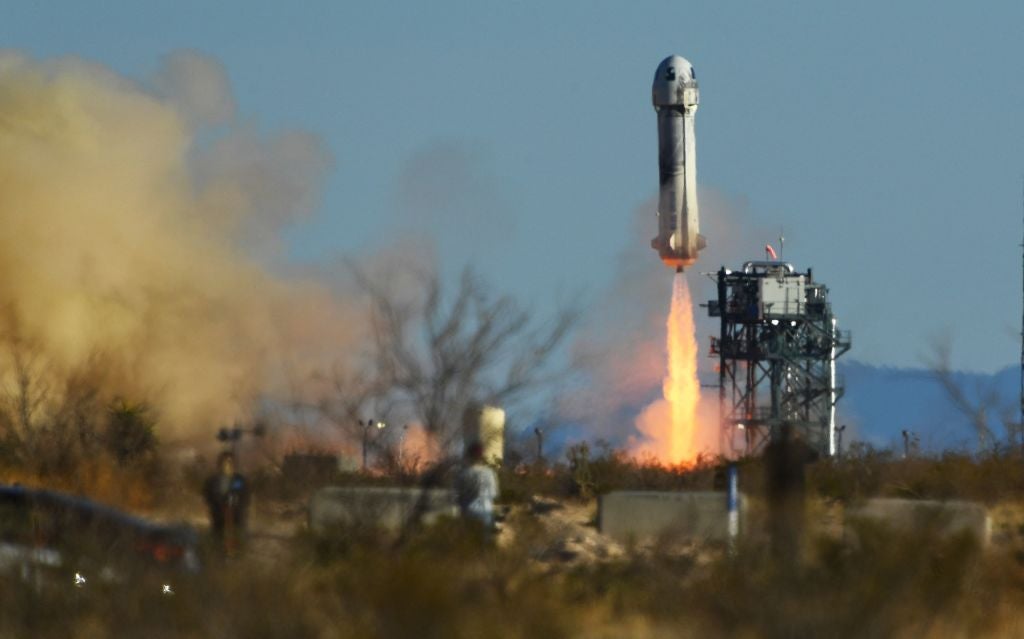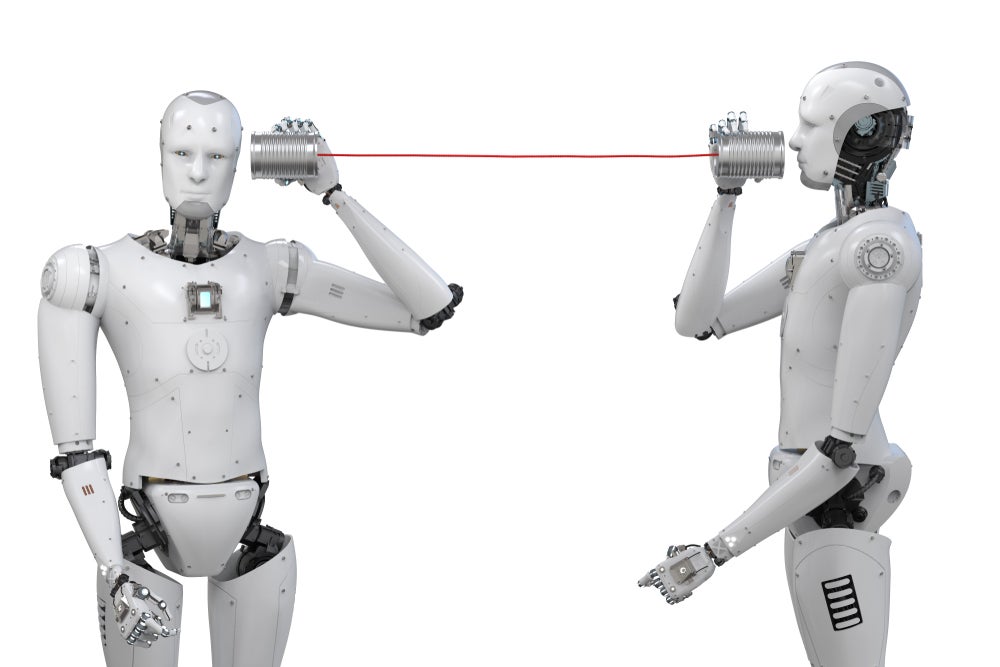
The space economy is rocketing into 2023 on a gravitational wave of big headlines. Billionaire man-children racing to be the first industrial tycoon of outer space have been responsible for an unproportionate chunk of those headlines. It’s understandable that they have been the focal point of journalistic missives from around the world, but the founders of Amazon, Virgin and the Boring Company hardly represent the big picture of the space economy.
Still, their endeavours catch people’s imagination of a potential interstellar future – as well as providing setups for jokes and jibes. Jeff Bezos blasting himself into the lower reaches of the final frontier riding a penis-shaped rocket has been the comedic gift that keeps on giving.
Similarly, Richard Branson may be able to claim to have breached the lower barriers of space, but his decades-long struggle to transform Virgin Galactic into a profitable project are still long ways off, raising questions about the business plan behind the venture.
Elon Musk, the chided chief twit who’s seen Tesla shares tank since his Twitter takeover, has not engaged in the same kind of space tourism endeavours as his billionaire kin – apart from selecting a passenger to join a Space X trip around the moon at some point in the future. However, he has arguably made an impact on a geopolitical scale by providing Ukraine with access to his Starlink satellite network to protect the nation’s digital infrastructure and prevent internet outages amidst the Russian invasion.
Although, whatever goodwill he may have drummed up from Ukraine seemingly evaporated in October when he posted a Twitter poll suggesting that the country should just give up some occupied territories to Moscow in order to end the conflict. Ukraine’s German ambassador Andry Melynk fired back with an angry tweet, not mincing his words.
“Fuck off is my very diplomatic reply to you,” Melnyk tweeted, adding that the “only outcome is that now no Ukrainian will EVER buy your f…ing tesla crap. So good luck to you.”
How well do you really know your competitors?
Access the most comprehensive Company Profiles on the market, powered by GlobalData. Save hours of research. Gain competitive edge.

Thank you!
Your download email will arrive shortly
Not ready to buy yet? Download a free sample
We are confident about the unique quality of our Company Profiles. However, we want you to make the most beneficial decision for your business, so we offer a free sample that you can download by submitting the below form
By GlobalData
The space economy is rocketing into 2023
While the noise from these billionaire projects is overpowering at times, they don’t detract from the fact that the space economy is heading into 2023 on a promise of stratospheric potential.
Research and analyst firm GlobalData has forecast that the industry will be worth over $1tn by 2040.
In a recent report, analysts from the firm noted that while defense deals, scientific progress and celebrity flights make up the bulk of headlines, other factors play an even bigger part in the industry’s future.
These factors include technological advancements in space solar cells, network latency and reusable launches. These advancements are set to stimulate real growth in the space economy. In addition, the researchers estimated that the construction of space stations, space tourism and mining projects will make up a significant amount of commercial space activity by 2030.
In order to make heads and tails of the future of the space economy, we reached out to market stakeholders and experts to hear their predictions for what’s to come in 2023. Check out what they had to say below.

Jessica Regan, programme portfolio manager, BAE Systems Digital Intelligence
AI and machine learning to be applied more widely to analyse huge datasets generated in space.
While AI and machine learning are already used in other sectors, practical applications in space are currently in their very early stages. In 2023, however, we will begin to see new capabilities applied more frequently when it comes to analysing huge datasets generated by satellites.
Currently, most sensors in space downlink everything they are trying to collect, which makes it difficult for those on the ground to pick out signals from the noise in a timely manner. Using AI and machine learning to analyse this data on board makes it possible to only downlink relevant pieces of information rather than sending the data set. The benefits will be significant for people on Earth, enabling us to better protect citizens in near real-time.

Michael Brown, associate professor, Monash’s School of Physics and Astronomy
The rapidly increasing number of satellites in orbit has been a theme in 2022 and this seems sure to continue in 2023. While the Starlink internet satellite constellation has the most satellites in orbit, other constellations are on the horizon including Kuiper and BlueBird.
With this rapid growth, there is increasing concern about the environmental impact of satellite constellations, including light pollution of the night sky, and this has been highlighted by a recent report by the US Government Accountability Office and the launch of BlueWalker 3 (a prototype for BlueBird).
There should be several new rockets launched into orbit for the first time in 2023. The first SpaceX Starship may launch in December 2022, but this could easily slip in 2023. Starship could be a game changer for launching very massive payloads into orbit – particularly if its costs are as low as predicted. The first Vulcan Centaur and Ariane 6 launchers are also planned for 2023 (amongst others), so the range of launchers available will look quite different in late-2023 to what it did 5 or 10 years ago.
There will be many crewed spaceflights during 2023, including Crew Dragon, Soyuz, Shenzhou and the first (much delayed) crewed Starliner flight. Looking beyond 2023, excitingly, crewed circumlunar spaceflights with the Starship and Orion spacecraft are possibilities for 2024.

Atma Prakash, senior lecturer in aerospace engineering, Teesside University
There’s plenty to look forward to in the space industry in 2023. The next year will be categorised by space tourism, exploration missions, innovation in the next generation CubeSats and excitement for the next Moon and Mars missions.
One of the highly anticipated missions is the Jupiter Icy Moons Explorer (JUICE) interplanetary mission scheduled to launch in April 2023. The spacecraft will carry out mission studies to the Jupiter’s moons: Ganymede, Callisto, and Europa and will reach Jupiter in July 2031 after around eight years of travel. It will perform multiple gravity assists manoeuvre.
The spacecraft will eventually enter the orbit around Ganymede for its close-up mission, becoming the first spacecraft to orbit a moon other than the moon of Earth. The JUICE mission will address two themes of ESA’s Cosmic Vision programme: What are the conditions for planet formation and emergence of life? and how does the Solar System work? The total mission duration is close to 11 years, of which about 3.5 years would be spent in the Jupiter system.
The second anticipated mission is the Psyche mission and is scheduled to launch in October 2023. This is the first mission to a unique metal-rich asteroid orbiting the Sun between Mars and Jupiter, to study the origins of its formation. Currently the mission is in the instrument, spacecraft assembly and testing phase and will be launched by NASA. This mission will shed light on the formation of the rocky planet with iron core. It could help in understanding the formation of our planet with iron core in the centre.
The successful launch of NASA Artemis 1 and all the future mission to Moon, Mars and beyond will propel more enthusiasm in the next generation of students to choose the STEM subjects. I am sure 2023 is going to be another exciting year for all the space enthusiasts and it will certainly ignite spark of curiosity in young space explorers to look beyond the horizon as sky is not the limit.

John Young, head of strategic campaigns space, BAE Systems Digital Intelligence
In 2023, space innovation will become even more vital for boosting defences and delivering advantages on Earth, especially in a time of increased conflict and tension. We’ll therefore see more emphasis on growing the sector in line with the government’s National Space and Defence Space Strategies.
As part of this growth in innovation, a greater focus will be placed on involving smaller organisations in defence programmes and contracts. For this to happen, the relationship between ‘primes’ and SMEs will need to evolve beyond supply chains, which means working together in a new, dynamic way. Not only will this collaboration help smaller organisations in the space sector to grow, but it will also enable ‘primes’ to deliver enhanced capabilities to customers.
The onus is also on customers to encourage collaboration by outlining it in contracts and development programmes. Risk levels increase when working with smaller organisations, which is something customers will have to accept and build into programmes.

Elizabeth Seward, head of strategy space, BAE Systems Digital Intelligence
Within all sectors, there is no doubt that sustainability will be a key focus in 2023 and beyond. For organisations within the space sector, there are two very different areas they need to address.
The first relates to the organisations themselves. Many will continue to find ways to develop capabilities in a sustainable way to meet the net-zero targets. This might include switching to clean energy sources and electric propulsion to working in partnership with other organisations to introduce new green initiatives.
The second links to sustainability in space. There is currently a growing amount of junk and debris in space, which is leading to a sustainability dilemma. Over the coming years, we will see more efforts to build awareness around the impact of satellite launches and deploying new equipment, as well as removing dead satellites. We can also expect to see the sector innovate to increase the life expectancy and versatility of satellites.
At BAE Systems, for example, we’ve partnered with in-space missions to invest in satellites that are reprogrammable. Moving away from deployment and launch for a single mission, providing reconfigurable, mission-specific satellites that can refuel and re-equip in the longer term will be critical.

Neil Sherwin-Peddie, head of space security, BAE Systems Digital Intelligence
The first major satellite hack [is coming]. From the attacks on ViaSat via supply chain vulnerabilities which exposed the ground terminal, to more recent threats against Starlink low earth orbit (LEO) satellites, events in 2022 have indicated that the space race is far from over. In 2023, the focus will continue to shift towards satellite compromise, with the first major satellite hack to be expected in the next 12 months. This will likely involve all three main attack vectors: ground, communication links and payload hijacking.
From the ground station perspective, it is highly possible that vulnerabilities in physical security will be targeted. Leveraging the cost-of-living crisis, malicious actors could exploit insiders to gain direct access to satellite operations centres and mission operations centres. This will enable them to take control of spacecraft, disable communication links or capture all earthbound transmissions.
Communication links will also be a prime target in the coming years. Earth-to-LEO satellite communications are vulnerable as spacecraft are frequently passing over potentially hostile territory. The adversary can use satellite blinding as these satellites pass to capture critical imagery or radio frequency data.
Lastly, poorly developed DevSecOps principles could see the introduction of malware based on the reliance on COTs code bases. A lack of understanding around code and applications could allow an attacker to hide on spacecraft payload and run tasks undetected.

Ellison Anne Williams, CEO and founder, Enveil
While the category may fall outside of what would traditionally be considered relevant to advances in the space industry, privacy enhancing technologies (PETs) will play a pivotal role in the exploration of space communications in 2023.
The reason can be summarised in one word: data. While there are clearly many unique and interesting aspects about the space environment, the ability to securely and privately leverage the vast volume of space-related data across boundaries at scale is foundational to advancing our collective capabilities.
No matter where it takes place and the value it can provide, ubiquitous data usage is not without its challenges. Data is the backbone of the digital economy and organisations across all sectors are increasingly having to balance value extraction and risk management. The pace of change has left regulators and lawmakers scrambling to keep up, which frequently leads to a lack of clarity. PETs enable, enhance, and preserve the privacy of data throughout its lifecycle, allowing entities to achieve secure and private data usage without compromising data ownership or exposing sensitive indicators or insights.
The PETs momentum began to build in the space arena this year as organisations worked together to design and build new space-based communications. In July 2022, the Defense Innovation Unit (DIU) announced the launch of its hybrid space architecture program (HSA), which aims to integrate commercial and government space assets to provide global, secure internet connectivity across multiple domains for commercial, civil, and military users, including international partners. This use case requires secure data sharing and collaboration, capabilities that can be uniquely provided by PETs.
Leveraging the power of PETs, organisations can extract insights, cross-match, search, and analyse space-related data at scale in ways that are not otherwise possible. These capabilities are being woven into the fabric of projects like the HSA to help leverage both commercial and government space assets across diverse orbits to provide secure, assured, and low-latency data communications anywhere on and off Earth. In 2023, PETs will significantly help shape space as the mission landscape of the future where data interoperability, security, and access are critical to advancing any collaborative effort.

Stewart Marsh, head of aerospace, Cambridge Consultants
I’m really enthused by the advances we’re likely to see in the space industry next year. No least the fact that 2023 will be marked by the first trials of ‘direct to mobile’ cellular connectivity from space, thanks to the growing constellation of low LEO satellites. The technology of these first-of-a-kind satellites features the huge phase-array antennas that will one day become the norm. No special user terminal is required, and they will work with a regular cell phone.
AST Space Mobile are leading the way, but companies such as SpaceX have started their own design and development as competition hots up. Connectivity will start with text messaging services, but I predict this will be the catalyst for ‘data everywhere’ and a new gold rush for mobile network operators. Watch this space.
Some other thoughts? Look out for innovations such as transparent phased array antennas, which will be a key and exciting area of research in 2023. Meanwhile, the coming 12 months will also see significant uptake for ‘broadband from space’ as the mega-constellations achieve operational status.
The UK government has just announced a deal with Starlink to provide rural broadband coverage in certain parts of the country. The mega constellations target fixed wireless broadband and require dedicated terminal equipment. We’re talking about a game-changer for some of the 3bn people in the world who have never used the internet.
The technology is great for home and enterprise use, but there is increasing demand for ‘comms on the move’ and I anticipate further innovation that will enable high-speed data in current blackspots. I’m thinking commercial aviation and maritime applications.
As well as ‘broadband from space’ a quiet revolution has been happening in the ‘remote IOT’ world.
Satellites using narrowband technology enable COTS (commercial off-the-shelf) IoT devices to connect anywhere on the planet. 2023 will see initial trials and new commercial opportunities emerge as global low-cost, low-power data collection becomes a reality.
And a final word – all of these new services require supporting infrastructure!.So, expect design and development of all of the following will advance in 2023: gas stations in space; assembly and maintenance vehicles in LEO; and network support infrastructure to include data trunking systems and backhaul plus data storage and processing.
Space solar power will be in increasingly discussed topic in as energy prices continue to rise and the need to address climate change intensifies. That means solar panels in space and energy transfer to earth using lasers or microwave beams. 2023? Bring it on.

Volodymyr Levykin, founder and CEO, Skyrora
We saw a number of trends emerge in the spacetech sector in 2022, and we can only expect for them to continue throughout 2023. The burgeoning space industry will flourish as a result of the seeds sown in the previous year; an increasing budget, a global commitment to space exploration, and a growing awareness of the new space economy.
It’s not only private individuals and venture capital firms that invest in space – the industry has both national and supranational backing. Towards the end of 2022, the European Space Agency (ESA) announced a 17% rise in its budget, and it will be interesting to see how the region’s space programme takes shape as this capital is distributed among nations. Looking closer to home, the UK laid the foundations for a bright future in space this year. Following the Civil Aviation Authority (CAA) Spaceflight Team, the Department of Transport and UK Space Agency’s decision to grant the UK’s first spaceport licence to Spaceport Cornwall, we will inevitably see how the intricacies of vertical launch sites are to be ironed out due to the complexities of those launches.
For Skyrora, in 2023 look forward to ensuring safe and responsible UK launch in the future through the granting of our launch vehicle licence application from the CAA, the application for which our talented team successfully completed and submitted earlier this year. This will of course bring us closer to our goal of orbital launch, and follows the momentum building milestones we achieved throughout 2022 to bring sovereign orbital launch capabilities to the UK. The technology is in place for the UK to have an agile and mobile launch infrastructure and market demand for a variety of in-orbit services is only going to grow stronger in the year ahead.
GlobalData is the parent company of Verdict and its sister publications.







